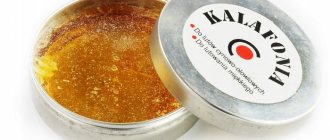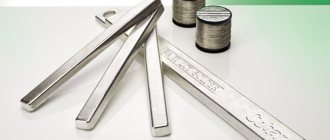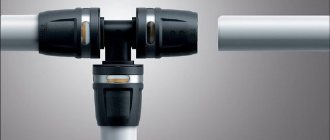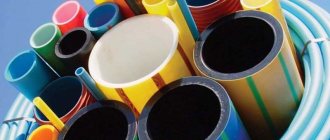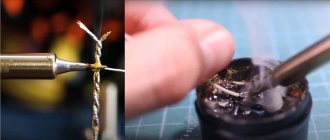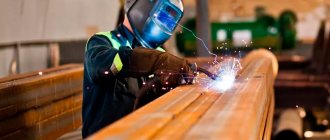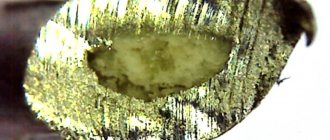Lead-free solder - in simple terms, is a category of materials whose chemical composition does not contain lead.
Initially, the materials included in this category were created for environmental reasons. This is due to the structure of lead; the fact is that this metal is very heavy, it negatively affects the environment and can harm the health of the human body. Materials that do not contain lead, but contain other harmful substances, such as mercury and cadmium, are also classified as lead-free. The simplest example can be given - ordinary tin solder. It contains no chemical elements other than pure tin. Because of this feature, it increases its electrical conductivity properties and also becomes more susceptible to the influence of moisture and water.
To combat some obvious shortcomings, gold, silver, copper, etc. are additionally used along with pure tin solder. These chemical elements make it possible to compensate for the absence of lead in the consumables. In particular, they significantly increase the strength of the material without making it harmful to the environment and the human body. However, due to the presence of additional elements, the melting point of the substance increases significantly, which significantly limits the range of uses of the material.
Lead-free solder is a relatively new substance. To date, it has not been possible to create an alternative material that could fully replicate the properties of consumables containing lead. The total number of available disadvantages still significantly exceeds the advantages of using this type of material. However, one advantage, which is expressed in safety for the environment and humans, allows this material to outperform classic lead solder. In this case, safety of use is given greater preference than the strength of the created connection. The production of lead-free solder is carried out in strict accordance with government standards. The most popular type of material is solder with an additional chemical element - silver.
General requirements
The number of metal compositions that do not include lead is constantly increasing. Thanks to many years of practical use, several basic compositions have become famous. Many of them are characterized by the eutectic phenomenon.
It lies in the fact that the melting point of an alloy with a carefully selected ratio of metal components is lower than that of any other mixture of selected metals. The eutectic qualities of lead-free solder make it possible to reduce the heating temperature of the working area and save the amount of electricity consumed.
There are general requirements for lead-free solders - the absence of unnecessary impurities. Foreign metals negatively affect the quality of the seam:
- if the alloys contain small amounts of nickel, the weld may have cavities;
- aluminum impurities will result in a dull and grainy compound;
- iron significantly increases the likelihood of scale formation;
- copper in excess tends to increase wettability;
- Antimony can cause the formation of a seam that is brittle at low temperatures.
It is important to use solders made by reputable manufacturers. At enterprises professionally involved in the production of lead-free solder alloys, much attention is paid to monitoring the cleanliness of all components. You can trust the quality of such products.
Lead-free solder
Lead-free solder - in simple terms, is a category of materials whose chemical composition does not contain lead.
Initially, the materials included in this category were created for environmental reasons. This is due to the structure of lead; the fact is that this metal is very heavy, it negatively affects the environment and can harm the health of the human body. Materials that do not contain lead, but contain other harmful substances, such as mercury and cadmium, are also classified as lead-free.
The simplest example can be given - ordinary tin solder. It contains no chemical elements other than pure tin.
Because of this feature, it increases its electrical conductivity properties and also becomes more susceptible to the influence of moisture and water.
To combat some obvious shortcomings, gold, silver, copper, etc. are additionally used along with pure tin solder. These chemical elements make it possible to compensate for the absence of lead in the consumables.
In particular, they significantly increase the strength of the material without making it harmful to the environment and the human body.
However, due to the presence of additional elements, the melting point of the substance increases significantly, which significantly limits the range of uses of the material.
Lead-free solder is a relatively new substance. To date, it has not been possible to create an alternative material that could fully replicate the properties of consumables containing lead. The total number of available disadvantages still significantly exceeds the advantages of using this type of material.
However, one advantage, which is expressed in safety for the environment and humans, allows this material to outperform classic lead solder. In this case, safety of use is given greater preference than the strength of the created connection. The production of lead-free solder is carried out in strict accordance with government standards.
The most popular type of material is solder with an additional chemical element - silver.
Advantages and disadvantages
Each material, regardless of its main purpose, has a number of pros and cons. Lead-free solder is no exception. Its popularity is due to the following advantages:
- high level of safety for the environment and the human body;
- absence of harmful, toxic substances in the chemical composition;
- increased degree of electrical conductivity;
- the material, especially that which consists of pure tin, has an increased level of wettability;
- a wide range of solder models from different manufacturers;
- models containing copper as an additional element are quite resistant to high temperatures.
Minuses:
- if we draw parallels with lead alloys, tin compounds with various additional elements significantly reduce the level of wettability, relative to lead solder models;
- lead-free solder, despite its fairly good ability to conduct electric current, cannot be used in technology, due to a disadvantage in the form of the growth of so-called “whiskers”, which are susceptible to various types of cracks;
- Due to the elevated melting point, this type of material cannot be used when soldering thin or heat-sensitive metal, as this will negatively affect the physical properties and integrity of the material.
Classification
- Lead-free solders are divided into several main types, the most commonly used ones can be considered.
- Copper is used as an additional element.
This type of solder was created for soldering printed circuit boards. This is done using a wave of solder. However, if we draw parallels with other versions of lead-free solder, this one has a reduced strength property. This type also requires melting at a high temperature, which is not always required. - Silver is used as an additional element.
This type of tin solder, where lead in the chemical composition is replaced by silver, is the most commonly used relative to all other types. This modification lends itself well to soldering. In the deposited state, it has good strength properties and other mechanical characteristics.The substance begins to melt when it reaches two hundred and twenty degrees Celsius. This modification of lead-free solder in some cases can compete in characteristics with classic lead consumables.
- Tin solder with two additional chemical elements in the composition: silver and copper.
This version of lead-free solder was the first to be used. It has a low melting point. A significant percentage, which takes values of ninety, is tin in the composition. Connections created using this subtype of lead-free solder have fairly high mechanical properties. This type, when compared with the two described above, is the best option from an economic point of view. - Bismuth and silver are used as additional elements.
This type, relative to all those described above, has the lowest melting point. This property significantly narrows the range of applications of this material. Of all the types of lead-free solders, this one is the best for soldering.
Chemical composition and physical characteristics of lead-free solders from popular manufacturers
A fairly large number of different manufacturers are engaged in the production of lead-free solder. It is worth taking a closer look at the chemical composition and physical properties of the most popular brands.
Indalloy 227 – the main purpose of this solder model is soldering lead-free materials and printed circuit boards. The substance begins to melt when it reaches a temperature of 187 degrees Celsius. The composition is as follows (values in percentage):
- Sn – 77.2;
- In – 20;
- Ar – 2.8.
Alloy H – the use of this solder in the soldering process requires the use of the “wave” method. This substance should absolutely not be used for soldering containing lead and bismuth. It undergoes melting when it reaches a temperature of 212 degrees Celsius. The chemical composition looks like this:
- Sn – 84.5;
- Bi – 7.5;
- Cu – 5;
- Ar – 2.
TinZinc Indium - this solder model can only be used for materials whose chemical composition does not contain lead. It begins to melt when it reaches a temperature of 178 degrees Celsius. Chemical composition:
Castin - when soldering something with this solder, the use of elevated temperatures is required. The material begins to melt when it reaches a temperature of 215 degrees Celsius. The chemical composition of solder includes the following substances:
- Sn – 96.2;
- Ar – 2.5;
- Cu – 0.8
- Sb – 0.5.
Tin Silver-Copper - when soldering with this solder, you must use a temperature equal to 260 degrees Celsius or higher. The substance undergoes melting when it reaches 217 degrees Celsius. The chemical composition includes three chemical elements and is as follows:
- Sn – 93.6;
- Ar – 4.7;
- Cu – 1.7.
How to choose?
You should choose one or another model of lead-free solder based on its chemical composition.
Most often, tin predominates in the chemical composition of lead-free solder, and therefore the characteristics of this metal are transferred to the consumable material to a greater extent than the properties of others.
Accordingly, this affects the softness of the final result of the connection - it is quite high. In addition, it significantly reduces the temperature point at which the material begins to melt.
It is important to know: if you were unable to find the desired model of lead-free solder in the store’s assortment, then you can use the domestic product PSR 45 as a substitute; it is worth noting that it contains a small proportion of lead, which is equal to approximately half of one percent of general composition.
The more copper contained in lead-free solder, the higher its melting point, and, consequently, its hardness. Just a couple of percent of the total composition is enough to radically change the characteristics of the material.
Silver gives solder exactly the same properties as copper, but does so in a softer mode. Due to this, lead-free solder containing silver is sold at a slightly higher price than copper options.
Consumables containing rare materials such as bismuth and antimony are intended for complex special cases and are used quite rarely.
Their price is the highest relative to all other versions of lead-free solder.
Many people may wonder how soldering is done using lead-free solder as a consumable. It is worth saying that the procedure is practically no different from soldering using classic lead-containing solder.
First you need to clean the working surface and dry it completely. To do this, you can use almost any solvent without any problems. Next, you need to melt the solder onto the soldering area.
After which it needs to cool on its own at room temperature. The next step will be to check the resulting connection for strength and quality.
The main distinguishing feature of using lead-free solder, as opposed to classic solder, is the use of a special heating mode.
Tin, silver, copper
Tin and copper solders have been used for a long time. The mixture is eutectic, and has a melting point higher than other lead-free solders.
The solder composition of tin and silver has excellent performance qualities. Soldering with it is easy, the seam is strong and durable.
The melting point of the eutectic composite with silver is strictly 221 °C. A narrow melting temperature range is a characteristic feature of all lead-free eutectic mixtures.
Solder of three components: tin, silver and copper began to be used much earlier than tin-silver material. It has a lower melting point of 217 °C.
Some foreign manufacturing companies produce lead-free three-component composites with a metal ratio slightly different from the usual.
As a result, the melting point of such eutectic mixtures may be different. Detailed information about the composition must be indicated by the manufacturer in the accompanying documents.
Legislative initiative or trend of the times
Why is it now that lead-free solders have so quickly begun to gain ground over traditional compounds? The fact is that the EU Directive “On the Restriction of the Use of Hazardous Substances” (adopted in 2003 and entered into force on July 1, 2006) obliged to limit the use of lead (and five other substances) in the production of electrical and radio-electronic devices. This is due to the requirements of environmental safety and human health. Lead belongs to the group of heavy metals, and its vapors are highly toxic.
Although adherents of the usual POS-40 solder should not be upset. It is still produced and sold. In many countries, tin-lead solders are used in the transport, military and aerospace industries.
Alloys with bismuth
Solder made from tin, silver and small amounts of bismuth has the best solderability. Sometimes germanium is added instead of bismuth. The lead-free alloy has a low melting point, which falls within the range of 200 to 210 ℃.
The value may vary depending on the ratio of metals. Additives improve the wetting of parts with the melt and contribute to the formation of high-quality seams.
The melting point of a mixture of tin, zinc and bismuth is very close to that of lead solders. The advantage of a lead-free alloy is the absence of a toxic component.
However, zinc, as an active metal, causes many problems. Solder paste can be used quickly and changes during storage.
Soldering with such a lead-free product must be done using fluxes in an atmosphere of inert gases. Otherwise, there is a high probability of oxidation and excessive slagging of the seam.
Which solder to choose for soldering: types, brands and characteristics
In the manufacture and repair of electrical equipment, skills in handling a soldering iron are constantly required, and solder and rosin are used for soldering; in the middle of the last century, tin was used for these purposes, but not in its pure form, since this is a very expensive pleasure, and alloys with other fusible materials metals.
Which ones are there?
What is solder and how to choose it correctly - in practice they can be soft or hard . Installation of any radio-electronic equipment occurs using low-fusible options.
Components of unknown origin differ in the following characteristics:
- The rich shine of the cut indicates a high presence of tin.
- The predominance of lead guarantees the substance a dull gray color and a matte surface.
- With an increased lead content, the product becomes plastic; for example, a wire with a cross-section of 6 mm is bent by hand without visible effort.
Sometimes, for high-quality soldering, a ready-made mixture is used - this is solder in the form of a wire, and the flux is sealed inside. Manufacturers produce similar substances with flux tolerance within 1-3% of the total weight, which has a beneficial effect on the soldering process and increases labor productivity, since there is no need to constantly dip the soldering iron tip into a jar of flux.
Based on consistency, they are available in two types: soft or hard solder, and based on the melting point, ordinary and refractory types are distinguished.
Solder wettability
This term means the adhesion of molecules of a liquid melt to a solid surface, the degree of which determines the fluidity of soldering . For good soldering, liquid solder qualitatively wets the surface where soldering occurs, and its boundary forms an acute angle.
Dried flux can only be removed by mechanical cleaning, because additional alloy has appeared. If a drop of molten substance forms an obtuse angle with the surface, then this indicates unsatisfactory wetting quality, which is counteracted by dirt, grease stains or a metal oxide film.
Options for wettability of soldering surfaces with molten flux.
Melting temperature
The main criterion for choosing high-quality alloys is that they must come into a liquid state earlier than the structures being joined , and the melting point of the solder differs significantly from that of another type, for example, those containing lead impurities.
The presence of different impurities affects the ability to melt at the same temperature, for example, POS-40 melts when it reaches 238 0C, but there are refractory solders and special devices are used for their melting.
Low temperature options
In first place is the VUDA alloy with the composition: 10% Sn and Cd each, 40% Pb and Bi, the beginning of the melt is 65-72 0C. The second position is occupied by a solder called ROSE, which begins to melt at 90-94 0C. Consists of: 25% tin and lead each, and the remaining 50% is bismuth. The above alloys are expensive solders.
The third place among low-temperature products is occupied by POSK-50-18, with a temperature of 142-145 0C. This solder contains 50% tin, 32% lead and 18% cadmium, which enhances corrosion resistance but adds toxicity.
The second nominee (called ROSE) is very popular among radio amateurs, but in domestic radio electronics its marking is POSV-50, where the numbers are the percentage of bismuth. Used for installation/dismantling and tinning of overheat-sensitive copper tracks on printed circuit boards.
Soft look stamps
Solder for soldering from this category is used with a ready-made flux located inside the wire, so melting occurs simultaneously.
A product called Tretnik has become widespread because it contains a third of the lead of the total composition.
Tin, which is part of the alloy for soldering, is environmentally friendly, so it is allowed to use this type in the food industry.
Soft types of solders are used for soldering parts that are afraid of overheating, for example: transistors or fuses. Due to its toxicity, WOOD alloy is used in limited areas of human activity.
Domestic alloys are marked with the abbreviation POS, but if there are other substances, a letter corresponding to the name is added at the end, for example, POSV-33 - this solder contains equal parts of tin, lead and bismuth.
Main technical parameters
Soldering materials are divided according to the following parameters:
- Conductivity , for example, solders containing aluminum have better similar values than those marked PIC.
- Tensile strength , unit kg/mm. This parameter directly depends on the percentage of tin.
- Melting point , which depends on the chemical composition.
Table of temperature and application depending on the chemical composition of the solder.
Flux
Solder with rosin in the form of a hollow wire twisted into rings is common on sale..
A flux of similar composition is made from coniferous trees; such a substance becomes soft when heated to 50 ° C, and at 250 ° C it begins to boil with partial evaporation.
Rosin must be removed after finishing work, otherwise oxidation will occur, and the substance, absorbing moisture from the air, will begin to interfere with the proper operation of the devices.
Popular formulations
There are three main categories:
- Light-colored rosin is used when joining copper and other soft non-ferrous metals; an alcohol solution with a concentration of one to five is used in a hard-to-reach area of adhesion; and a mixture of glycerin and rosin is used for hermetic soldering.
- Fluxes containing alcohol, petroleum jelly or zinc chloride are used to permanently bond non-ferrous and precious metals. The use of paste is justified by the fact that it is more convenient to apply it in the required quantity to the product.
- Acid-active substances are produced in liquid form, for example, orthophosphoric acid, which has a density of 1.7.
Pasty
Tinol paste has become widespread and is used for soldering various products in hard-to-reach places. It is applied with a spatula, followed by active heating with a soldering iron or other, more powerful electric tool. Often used by inexperienced performers who do not have the skills to work with tin and rosin.
Using PIC
The discoverers of this alloy were pleasantly surprised that it turns into a molten state at a lower temperature, and the eutectic mixture can act as a solvent for the added metal. This is how the very first brands of POS solders were developed.
Lead options
Such mixtures containing lead are characterized by softness, rapid melting and easy processing, which is why they are called lead-containing solders.
They are harmful and have been banned for use in soldering electrical components around the world..
The percentage of cadmium, mercury, and similar harmful components in equipment is strictly regulated and verified by relevant organizations.
Lead free
Lead-free solder must not contain harmful metals and is considered environmentally friendly, not causing harm to the environment and the solder performers.
The simplest example is tin solder, which contains pure tin, has increased wettability and high electrical conductivity.
To combat deficiencies, copper, silver and gold are added to them, which helps make the substance harder.
Such a product has an increased melting temperature, but it has not yet been possible to find a complete alternative to standard types of solder, but the main indicator is harmlessness. Tin occupies a major place in the chemical composition, so its inherent properties have a great influence on the solder, because of this, the melting point of lead-free solder is lower, and the material is softer.
Colophon resin
This is the name of the well-known rosin - an amorphous substance with a characteristic fracture and glassy sheen when chipped . In addition to the fact that it has a natural dielectric property, the following features are known:
- dissolves well in gasoline, alcohol, ether and acetone, but remains indifferent to the effects of water;
- the melting point varies between 50-70 degrees, but sometimes rises to 130 0C;
- the chemical composition contains up to 90% resin acids, the basis is abietic acid;
- easily destroyed with minor mechanical impact.
The color varies from light yellow to dark brown shades, which depends on the degree of purification and indicates the amount of foreign impurities. Excellent electrical insulating properties belong to lemon-colored resin.
Secrets of choice
The task of any performer is to create a strong and reliable fastening of radio components to the board, therefore the selection of solder is carried out according to the following parameters:
- The composition of materials to be soldered - here it is necessary to take into account the characteristics of the material, its ability to overheat and much more.
- When soldering wires or other large objects, refractory solders are used.
- Sometimes it is necessary to use solder that has a high ability to conduct electric current; it must be taken into account that the resistance of tin is much lower than that of lead, therefore expensive brands of solder are used for soldering high-frequency circuit boards.
In each specific situation, the performer must clearly know the correspondence of the solder and the product being connected in order to choose the best option for high-quality soldering.
conclusions
Today there is an abundance of different solders on sale, as they say, for all occasions, but you should choose proven samples that will help solder the product with high quality and with high reliability during operation.
What fluxes to use
Compositions in aqueous solution that do not contain volatile organic substances (VOC) are predominantly used as fluxes for lead-free soldering.
They are not prone to ignition and are active over a wide temperature range. Compositions and pastes based on them can be stored frozen for as long as desired.
Flux for lead-free soldering does not lose the necessary properties for a long time, has good surface tension, and improves the fluidity of the molten mass.
Health effects
The limited possibilities for using lead-free solders in electronics, their not very good wettability and unusual melting point cause dissatisfaction among many solders.
They question the safety of tin alloys. The opinion of some practitioners is that there are many inconveniences, but harm to humans still occurs.
The tin found in lead-free solders is toxic if particles enter the lungs. Tin boils at a temperature of 2600°. This is a very high figure, which, of course, is not achieved during the soldering process. Consequently, the release of tin vapor when soldering parts does not occur.
We advise you to study - TOP 10 best angle grinders (angle grinders) 125 mm
The metal itself is not dangerous. Tin is approved for use in the food industry. Therefore, the opinion about the toxicity of lead-free solders is not justified.
Soldering with lead-free solder is usually carried out according to a well-known scheme. The surface of the parts should be thoroughly cleaned, the selected solder should be melted, and distributed over the area to be soldered.
Particular attention should be paid to the heating temperature. Lead-free solders melt at lower temperatures
After cooling, you need to check the quality of the resulting connection.
Directions for use
The possibilities for soldering with lead-free solders are great. They include wave soldering or in special ovens.
You can use a regular soldering iron. The choice of technology is determined by the object, the operating conditions of the soldered product, and the specifics of production.
When working at defense enterprises, high-quality mixtures of tin, silver, and copper are recommended, to which antimony is added if necessary.
The presence of antimony worsens the environmental safety of the alloy. This is a very toxic element, mixtures with which are used only in cases of urgent need.
For working with professional equipment in industry and communication systems, solders made of tin, silver, copper or only tin-silver compositions of a eutectic nature are also suitable.
For office equipment, audio and video equipment, compositions based on tin, silver with or without the addition of copper or antimony are also recommended. Solders containing bismuth are used much less frequently for reasons of saving money.
High-purity lead-free solder ELSOLD
Lead-free solder is one of the main materials used in the soldering process.
It is specially designed for use in group soldering processes such as wave or double wave soldering, traction or dip soldering.
Solder in the form of wire without flux is also used for manual soldering with additional fluxing.
- High-quality soldering without icicle formation
- Quality meets the requirements of international standards J-STD-006, DINEN 61190-1-3, DINEN 29453 and DIN 1707
- Low levels of impurities increase solder life in the solder bath
- Long life in the bath
- They have less fluidity and less wettability. It follows that such compositions provide less reliable contact.
- Lead-free solder has a matte surface, which means it crystallizes under prolonged exposure to high temperatures.
- Due to the properties described above, there is a high probability of soldered parts falling off.
- If solder is exposed to solder for a long time at high temperatures, the latter may be damaged.
- Lead-free alloys are more expensive.
There are several types. The most popular are:
- Tin/Silver (designated SnAg). The amount of tin in the composition is 96.5%, and silver is 3.5%. Melting point is +221°C. A special feature of the composition is that it can be used with newer solders coated with pure tin. As for traditional tin-lead materials, it is incompatible with them.
- Tin/Copper (denoted SnCu). The amount of tin in the alloy is 99.3%, and copper - 0.7%. This composition is compatible with both new and old traditional solders. Melting point is +227°C. After hardening it has a matte surface. Distinctive features are the low cost of the composition, but also low performance characteristics.
- Tin/Silver/Copper (designated SAC). The amount of tin in this compound is 96.5%, silver - 3%, copper - 0.5%. In some cases, the amount of copper may vary slightly. This composition is one of the most popular so-called Pb-free solders. It is compatible with conventional lead-based compounds. The melting point of the composition is +219°C.
The lead-free solders listed are very common and are used in the electronics industry.
Main characteristics
| Options | Sn63Pb37 is given for comparison | ELSOLD TC07 | ELSOLD FLOWTIN® TC07 |
| Melting point (range), °C | 183 | 227 | 227 |
| Density, cm g 3 | 8,4 | 7,3 | 7,3 |
| Tensile strength N/mm 2 | |||
| At 20°C | 23 | 23 | 23 |
| At 100°C | 14 | 16 | 16 |
| Shear strength N/mm 2 | |||
| At 20°C | 3,3 | 8,6 | 8,6 |
| At 100°C | 1,0 | 2,1 | 2,1 |
Tin/Silver Alloys: ELSOLDTS
| Brand | Sn% | Ag% | Density g/m3 | Melting point/range °C |
| ELSOLD TS35 | 96,5±0,5 | 3,5±0,2 | 7,35 | 221 |
| ELSOLD TS38 | 96,2±0,5 | 3,8±0,2 | 7,36 | 221 — 238 |
| ELSOLD TS50 | 95,0±0,5 | 5,0±0,2 | 7,39 | 221 — 240 |
Tin/Copper Alloys: ELSOLDTC
| Brand | Sn% | Cu% | Peculiarities | Density g/m3 | Melting point/range °C |
| ELSOLDFLOWTIN® TC07 | 99,3±0,5 | 0,7±0,2 | Minor amount of Ni, Co | 7,32 | 227 |
| ELSOLDTC07 | 99,3±0,5 | 0,7±0,2 | 7,32 | 227 | |
| ELSOLDTC30 | 97,0±0,5 | 2,8-3,0 | 7,35 | 230 — 250 |
Alloys Tin/Silver/Copper: ELSOLDTSC
| Brand | Sn% | Ag% | Cu% | Density g/m3 | Melting point/range °C |
| ELSOLD TSC3005 | 96,5±0,5 | 2,8-3,0 | 0,5±0,2 | 7,37 | 217 — 219 |
| ELSOLD TSC3507 | 95,8±0,5 | 3,5±0,2 | 0,7±0,2 | 7,40 | 217 — 219 |
| ELSOLD TSC3807 | 95,5±0,5 | 3,8±0,2 | 0,7±0,2 | 7,40 | 217 |
Compatible Products
- Indium TACFlux 018 repair flux
- Indium TACFlux 025 repair flux
- Indium TACFlux 020B repair flux
Delivery conditions
High purity ELSOLD
in the form of rods for group soldering systems is maintained in stock.
Package
Solders brand ELSOLD
supplied in the form of ingots:
| Description | Dimensions mm | Weight/ unitskg |
| Ingots with eye for automatic loading | 50(W) x 18(H) x 600(L) | ~ 3,4 |
| -//- | 50(W) x 20(H) x 490(L) | ~ 3,2 |
| Triangular bars for loading selective soldering systems | 8 (W) x 10 (H) x 400 (L) | ~ 0,160 |
| Bar | 8 (W) x 10 (H) x 30 (L) | About a kilogram. Weight is not regulated. The minimum delivery quantity is a box of 20 or 25 kg. |
Lead-free solder is supplied on 500 gram and 1 kg spools of wire in various diameters ranging from 1.0 to 6.0 mm. It is also used in the form of wire in automatic feeding systems for which it is supplied on special spools weighing from 2 to 20 kg.
Storage and transportation
The shelf life of the material is at least 24 months from the date of production. It is recommended to store in a clean, dry place. Use after the expiration date is possible in most cases, but this must be confirmed by testing before use.
Features of soldering with lead-free solder
The transition to the use of lead-free solders is due to considerations of increasing environmental friendliness and human safety. However, this leaves an imprint not only on the use of these compounds, but also on technology. In each specific case they differ, but there are a number of general nuances. Among them:
- Most Pb-free compounds are compatible with traditional solders. There are exceptions, but they are few (check the documentation separately).
- Lead-free alloys generally have higher soldering temperatures. Therefore, it is often necessary to use other equipment for them.
- Due to the high soldering temperature, components are more sensitive to humidity. Therefore, additional storage requirements are often imposed on finished products.
- Pb-free solders have a higher surface tension coefficient. This means an increase in the likelihood of “swelling” of individual elements on the board.
- The wettability of the leads is usually worse. This leads to the appearance of “sinks” on the microcircuits.
Other catalog materials: Dow Corning materials.
Features of soldering technology
The technology for producing work using solders that do not contain lead is practically no different from soldering with conventional components. However, some features should be taken into account.
To the question of what they solder with, the answer is clear: a soldering iron. However, it is best to use a device with a thermostat. This will allow work to be carried out within the operating temperature range specified by the manufacturer. And it is significantly less than that of lead-based compounds.
To prevent overheating of parts and minimize thermal contact, it is necessary to select the optimal shape of the soldering iron tip. In addition, it should be borne in mind that a regular copper tip will not last long (when using such solders). It is better to use special tips coated with steel or coated with chrome and nickel.
The choice of flux also plays an important role when working with lead-free solders. Usually, special compounds are used for this (usually more chemically active). The most convenient to use are liquids, gels and pastes that do not require subsequent cleaning of the soldering area.
We advise you to study - Diagram of a stand for testing electrical protection devices
Otherwise everything is as usual:
- heat the soldering iron to the required temperature;
- if necessary, clean the soldering areas;
- apply flux;
- simultaneously apply a solder rod and a soldering iron tip to the junction of the elements;
- let the soldered elements cool naturally.
Others
Special types of metal alloys not related to solders themselves are used in electric vacuum technology for electrical leads that are fused into glass and operate at relatively low temperatures, when the use of refractory but relatively expensive metals (tungsten, molybdenum, platinum) is not required.
For these materials, the thermal coefficient of linear expansion (αl{displaystyle alpha _{l}}) is of particular importance, which must be matched as closely as possible to the αl{displaystyle alpha _{l}} of the glass to obtain a vacuum-tight seal. For example, kovar (alloy grade 29NK), used for the manufacture of electrical leads through glass flasks for various gas-filled and electric vacuum electronic devices and lighting lamps, has an approximate composition: Ni - 29%, Co - 18%, Fe - the rest; its resistivity is about 0.49 µOhm m, and αl{displaystyle alpha _{l}} is about 4...5·10−6 K−1.

